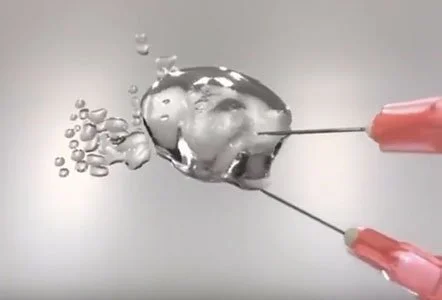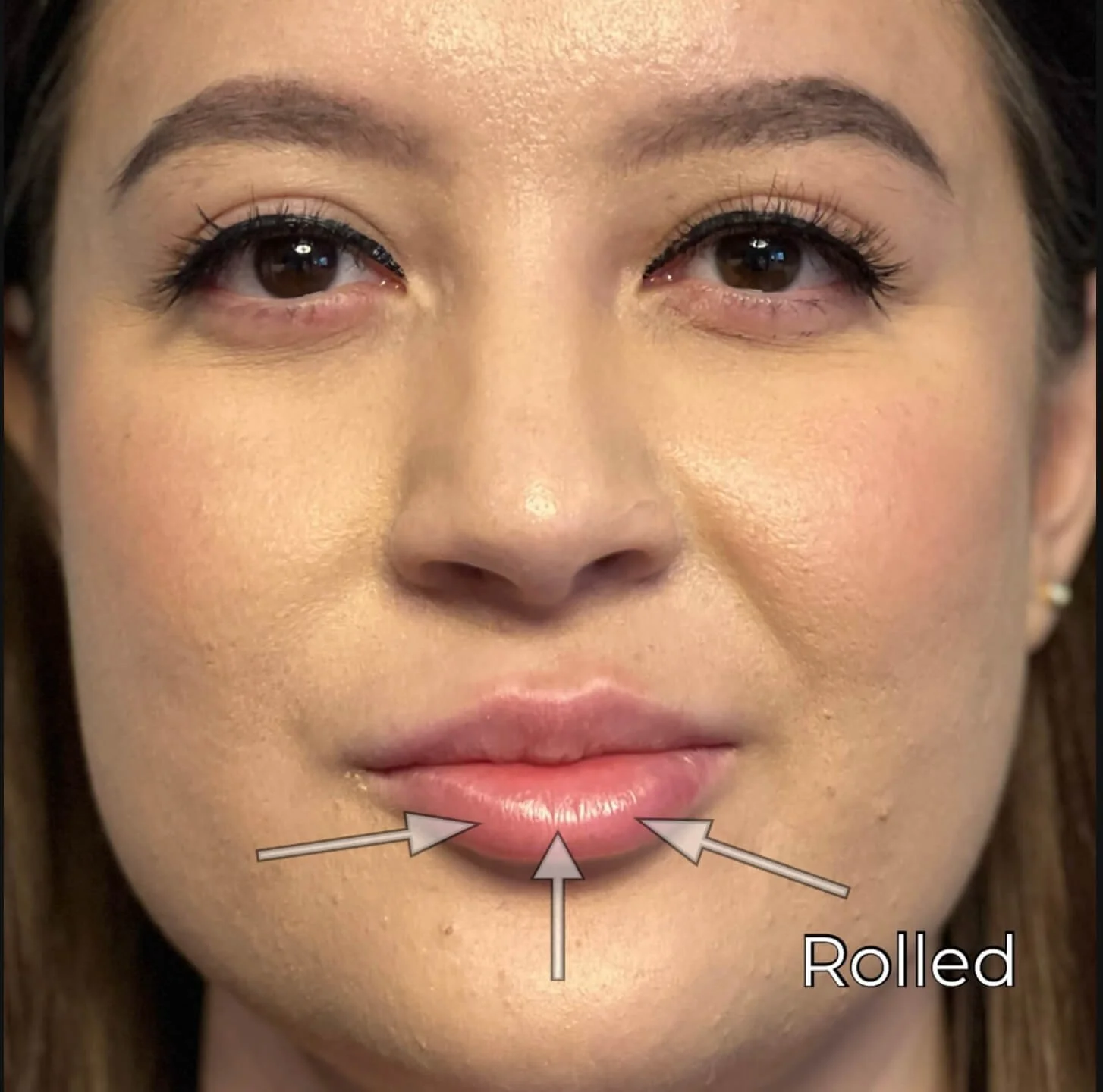A PDO (polydioxanone) nose procedure is a minimally invasive cosmetic procedure designed to alter the shape of the nose without the need for traditional surgical rhinoplasty.
PDO threads are biodegradable sutures that are used in various medical applications. In cosmetic medicine, these threads are utilised by qualified health practitioners to lift, sculpt or add definition to facial features, enhacing shape and removing the sagging skin.
A patient getting PDO thread lift on her cheek areas to remove chin sag.
How does HIKO nose lift work?
Under local anaesthesia, the doctor will insert PDO threads into specific areas of the nose or nasal bridge. The threads can then be pulled to lift the tip of the nose, straighten the nose (such as correcting a deviated nose), or enhance its overall shape.
Before the procedure, a detailed consultation with a certified practitioner would be required to assess the individual’s suitability for the procedure and discuss the desired outcome. The patient can then discuss their desired nose height to allow the practitioner to measure and estimate thread use. Then, the nose and surrounding areas are cleaned, and topical anaesthetic is applied to minimise the discomfort.
The procedure usually takes 30-60 minutes, after which patients can usually return to their daily activities with minimal downtime.
For follow-up appointments, the doctor will guide the patient on how to take care of themselves and schedule the follow-up appointments. The patient will then return home.
How do I care for my nose after HIKO procedure?
1-2 hours after the procedure, you can expect minor bruising or swelling, which will subside in a few days. If the area is not carefully cleaned, you may get an infection, however, this is rare and these risks are significantly lower compared to surgical alternatives.
Advantages of HIKO nose thread lift
Higher, more elegant, natural, and beautiful nose in an A shape.
The time required is very short, 15 – 60 minutes to own a natural and beautiful nose.
Require no surgical interference to minimize the amount of invasion, incision, and pain.
Has a reasonable and affordable price.
PDO threads for HIKO will dissolve and stimulate the generation of collagen to offer a better cosmetic result.
Allow the customers to return to their daily lives immediately without needing any recovery or specific diet.
Disadvantages of HIKO nose thread lift
Although this technique has many great benefits, it also has certain drawbacks:
Can only be done for people with relatively high nose-bridge as HIKO cannot lift the entire nose bridge above 3 mm.
Offer a short result time. You will need to have a second surgery if you want the nose to maintain its shape.
Cannot bring the perfect results like a surgical rhinoplasty.
The longevity of the nose thread lift depends greatly on the type of thread involved. This period can last between 6 – 8 months but in the end, HIKO lift is not permanent.
How to choose a trustworthy practitioner for my procedure?
For the procedure to be safest and gives out the best result, you must remember to:
Choose a quality and reputable facility:
This is a must regardless of the types of rhinoplasty that you choose as the ability of the surgeons can affect the success of the procedure greatly.
Choose the correct type of threads:
While cartilage plays an important role in rhinoplasty, the threads are very crucial to the safety of the nose thread lift. For that reason, you must be very careful in choosing the material for your procedure. Ensure to consult your doctor regarding your desired duration and how to choose your desired material.
How to take care of your nose after the procedure?
Maintain thorough nose hygiene by cleaning it regularly with saline.
Limit the contact with water for 2 days after the procedure.
Stop putting on makeup or washing your face and nose with soap.
Sleep lying flat, not sideways.
Take prescribed medications as guidance (if any).
Attend follow-up appointments as scheduled.
Avoid touching, twisting, or scratching the nose.






